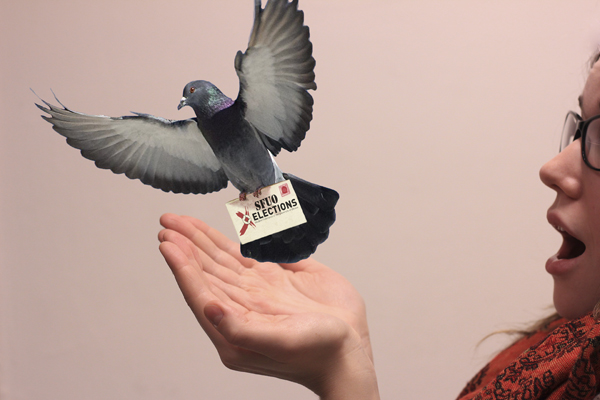The BOA sits above the SFUO, designed to “hold the executive accountable”
When the news broke that three SFUO executives were hit with allegations of fraud back in August, much of the blame centred on the executives of the student union itself. But the SFUO isn’t an organization without oversight, drawing into question whether the controversy leading up to the termination of the union’s contract with the U of O could have been prevented in the first place.
Above the SFUO sits the Board of Administration (BOA) composed of 27 members, including representatives for each faculty (proportional to the number of students in that faculty), a special student representative and an Indigenous student representative. The six SFUO executives also sit on the board.
The BOA is the highest decision-making body within the federation and is tasked with overseeing the affairs of the SFUO, meeting once month to debate student issues. They also approve the SFUO’s budget and annual auditor’s report.
“One of (our main tasks) is to hold the executive accountable,” said Rachel Harrison, one of three engineering student representatives on the BOA. “As a board, we did fail.”
“I think more checks, more transparency embedded in our constitution and governance structure could have helped prevent or bring these things to light earlier,” she added.
Some major weaknesses students have pointed out with the BOA include inherent conflicts of interest, the slate system, and bias of the chairperson of meetings. But Harrison and Ben King, another engineering student representative on the board, noted the BOA has recently implemented a number of changes to mediate these concerns.
“I want students to know there are members of the board looking out for their best interests and they are working hard to try to rectify the situation,” King said.
One of these changes is a motion to trash the faculty director slate system currently in place wherein candidates for the board can run as a team (similar to the Canadian political party system), introduced at the BOA’s meeting on Oct. 14. This would not impact the SFUO’s executive slate system.
“It does eliminate some of the potential partisanship,” King explained. “(BOA members will now be) coming in with their own ideas instead of voting with their friends for the sake of voting for their friends or working as a party, but instead they’re making their own conscious decisions for the best of the board.”
A motion concerning employees of the SFUO also passed first reading, preventing any current employee of the student union from sitting on the board.
“Employees might be put in a precarious situation where they’re voting on something that could affect their employment, depending on how they vote,” King said.
Another significant motion passed at the Oct. 14 meeting would prevent any SFUO executive or BOA member from chairing a board meeting. Also passed at the Oct. 14 meeting was a motion to prevent any SFUO executive from sitting on the elections committee.
“There was a lot of controversy about (former SFUO executive) Vanessa Dorimain … being elected as chair of the BOA for meetings,” King explained.
Finally, two more motions were passed: the first would establish the General Assembly (GA), a body made up of all U of O undergraduate students that currently sits above the SFUO and below the BOA, as the highest voting power within the federation, meaning the BOA could no longer overturn votes from the GA. The second involved federated bodies, which sit below the SFUO and represent undergraduate faculties and programs at the university. The motion would reserve a number of seats on the BOA for presidents of these bodies.
“Fed bodies … support students in a much more grass roots level, they’re more directly involved in student life … so giving them more of a say is very beneficial,” King said.
Graphic: Matt Gergyek.
These are “good first steps,” Harrison acknowledged, but “I don’t think we’re going to restore the student population’s faith in the SFUO with these things alone … there’s a lot more that needs to be done.”
On the other hand, King and Harrison said there are some problems with the way the SFUO communicates with the BOA that have led to transparency issues.
“For example, the letters from the university, we only got those a couple days before the Fulcrum got them, so we didn’t know these things,” Harrison said. “The board, the highest decision making body, should know these things.”
Harrison added they have yet to see a budget from the SFUO for this year.
Once the university’s contract with the SFUO is terminated come Dec. 24, King said the board may well continue to exist, but in a different capacity.
“We’d be dealing with the fallout of that potential decision by the university admin to not sign an agreement,” King said.
“I would just encourage students, even if they don’t have any faith that the SFUO will exist after Dec. 24, to still tune in to (BOA meetings) to watch what’s going on until then,” Harrison said.
A BOA meeting was held on Nov. 4, past the deadline for this publication, and the next meeting will be held Dec. 2, time and location to be announced.
— With files from Marissa Phul.
This article has been updated to reflect Dorimain’s position: she’s a former SFUO executive and her current title is executive coordinator.





